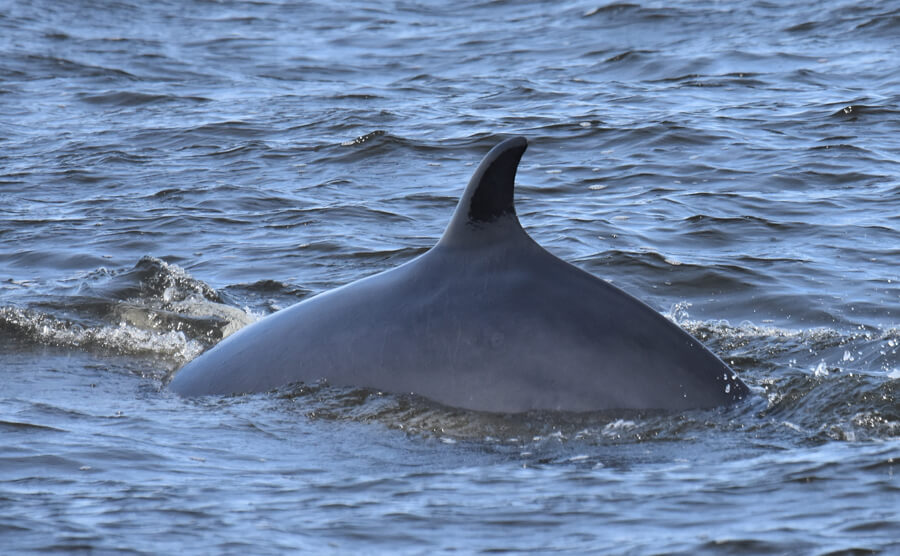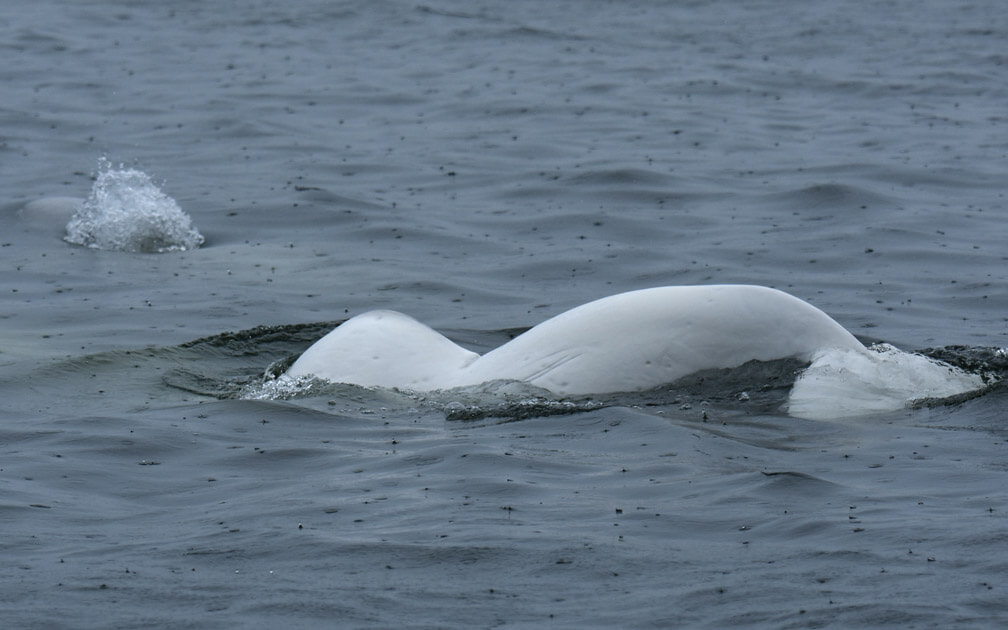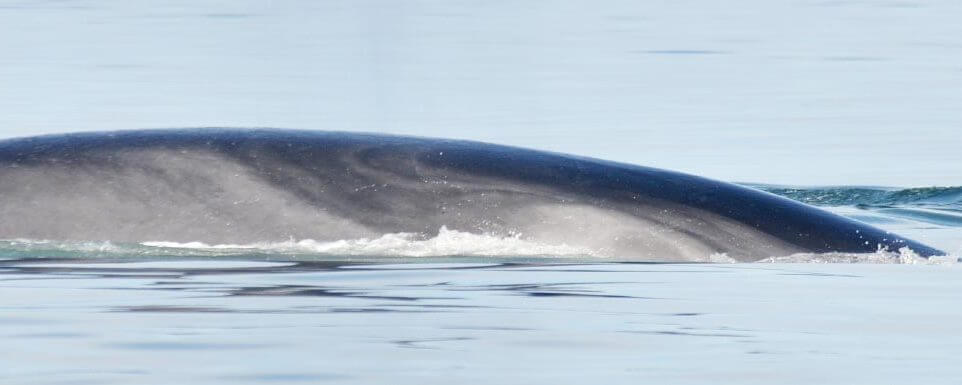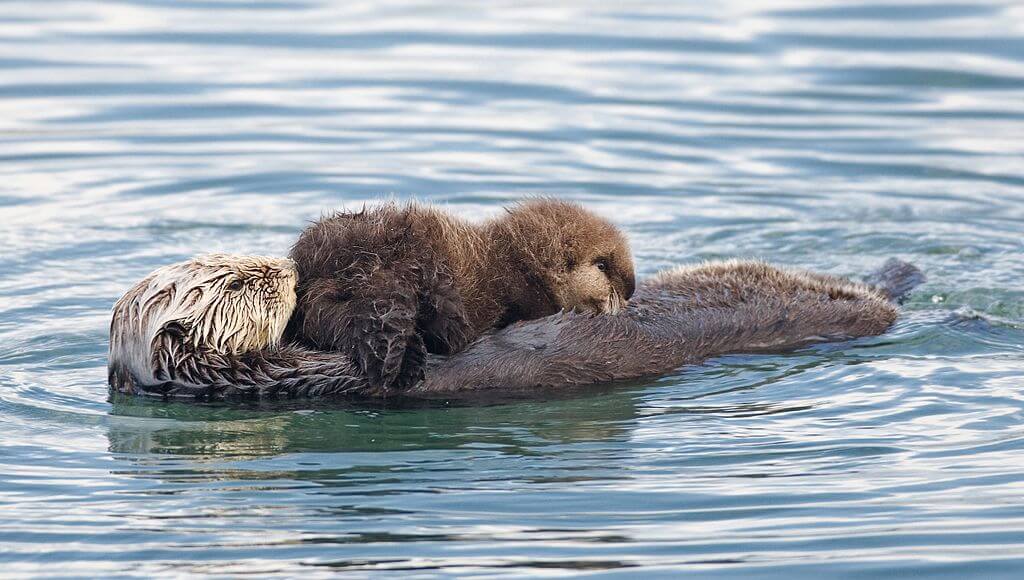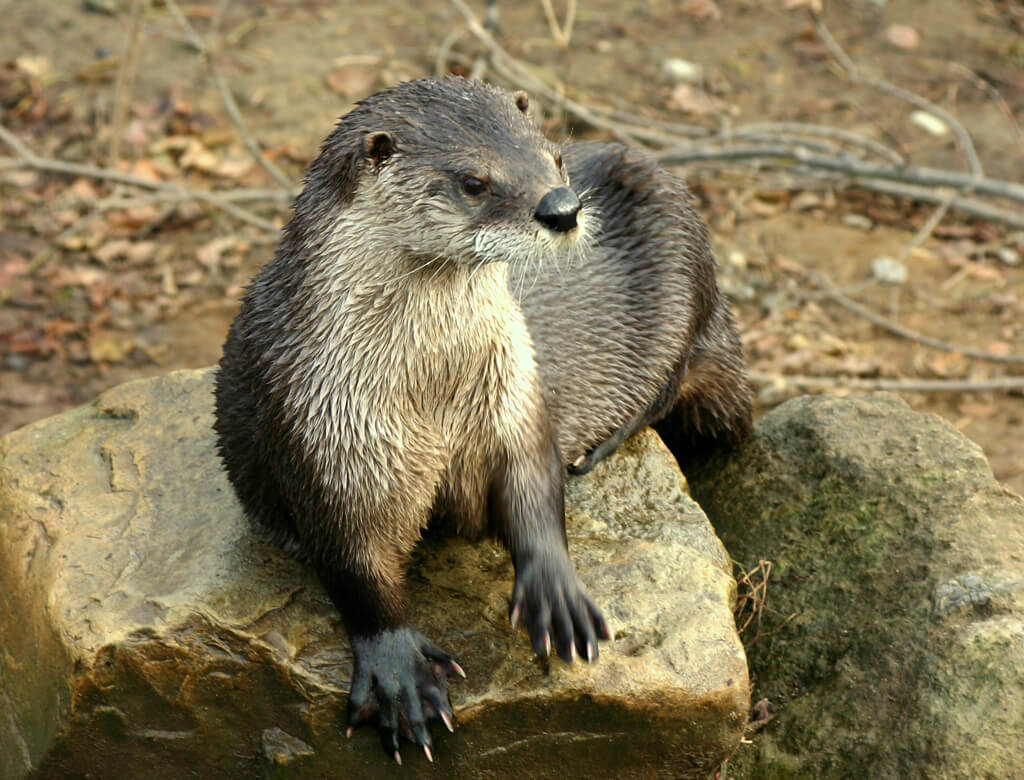From Haute-Côte-Nord to Charlevoix, belugas continue to delight observers. On April 24, a herd of about seven was spotted swimming off Cap-aux-Oies. Other white backs are spotted farther downstream.
On April 25, a resident of Les Bergeronnes takes advantage of the presence of a dozen or so belugas early in the morning. That afternoon, a pair lingered opposite his house for over two hours. All good reason to take a break from an otherwise busy day when there’s so much to observe!
“I wasn’t able to take a photo, but maybe you know this individual, its back is hunched,” said an observer, surprised to see a hunchbacked beluga in Les Escouminson April 26. He even attempts a sketch to illustrate the clearly visible hump on its back. However, without a photo, it is impossible to confirm the identity of this beluga, since there is more than one individual in the St. Lawrence that shows a deformed back. Of these, Pascolio, Néo and Scolio are among the best known. What makes their backs so different? These belugas may suffer from scoliosis or lordosis.
Black backs
On April 25, in Les Escoumins, an observer sees his first minke whale of the season. “It was big! It was heading toward Tadoussac, and fast,” he says.
The next day, the interim head of the call centre for the Quebec Marine Mammal Emergency Response Network, Méduline Chailloux, takes advantage of her day off to walk the Tadoussac Baybeach. She comes to rest on the rocks of Pointe Rouge and dozes off, lulled by the sound of the waves and the warm rays of the sun. How surprised she was to be awakened by a blowing minke whale!” It was just a few metres away from me and was heading out to sea. I was able to observe it surface three times. “
On the 28th, in the town of Gallix, a local resident spots a black back. She can hear the animal breathe, but sees no spout. She manages to photograph the whale as it hugs the shoreline. Its crescent-shaped back identifies it as a minke whale.
In Gaspé Bay, between one and four minke whales are being observed every day by a sharp-eyed resident of Cap-aux-Os. On April 24, however, large eddies at the surface catch her attention.
“I saw something strange appear on the surface, perhaps a head or a tail, then it disappeared. I was patient and waited. Then I saw a first whale come up to the surface. A second individual appeared beyond the first one. They were feeding near the surface. I ended up seeing their large spouts and their backs, at which point I was able to confirm that they were fin whales,” she explains. Fin whales have what is called a chevron on their back, a lighter-coloured, V-shaped marking that can be used to distinguish one individual from another.
And a bluish-grey back
On April 29, Jacques Gélineau spots the bulging blowhole and the mottled grey back of a blue whale off Port-Cartier. “In any case, he was pretty plump,” he exclaims. The observer also celebrates the return of several winged migrants, including common loons, cormorants and razorbills.
Marine mammal or not?
After being awakened by the minke whale, Méduline makes her way to the Tadoussacdunes. As she crosses the Moulin-à-Baude River, a movement catches her by surprise. An otter! Is it a sea otter? No, in Canada the sea otter (Enhydra lutris) lives only in the Pacific. On this side of the continent, the only otters we have are river otters (Lontra canadensis,). Even though it lives in close proximity to the marine environment, the river otter, unlike its Pacific cousin, is not a marine mammal. To be considered a marine mammal, the animal must spend the majority of its life and perform the majority of its activities in the water. To find out the most striking differences between sea otters and river otters, check out the fun quiz created by Fisheries and Oceans Canada.


